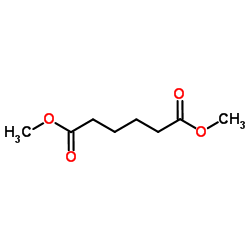A microscopic and ultrastructural evaluation of dibasic esters (DBE) toxicity in rat nasal explants.
B A Trela, S R Frame, M S Bogdanffy
Index: Exp. Mol. Pathol. 56(3) , 208-18, (1992)
Full Text: HTML
Abstract
Dibasic esters (DBE) solvent has been demonstrated to induce a mild degeneration of the olfactory, but not the respiratory epithelium of the rat nasal cavity following a 90-day inhalation exposure. Previous work has demonstrated that acid phosphatase release is a reliable index of DBE-induced cytotoxicity in an in vitro system of rat nasal explants. In the present study, rat nasal explants were examined microscopically and ultrastructurally following incubation in varying concentrations of a representative DBE, dimethyl adipate (DMA). DMA-induced microscopic and ultrastructural changes in rat nasal explants correlated well with biochemical perturbations associated with DBE exposure in a previous study. In both studies, olfactory epithelium was more susceptible to DMA-induced toxicity than respiratory epithelium and DMA-induced nasal toxicity was attenuated by pretreatment with a carboxylesterase inhibitor. The results of this study support the hypothesis that DBE and potentially other inhaled organic esters induce nasal toxicity via a common mechanism, carboxylesterase-mediated production of toxic acid metabolites. It was established that carboxylesterase-rich sustentacular cells are the primary target cells for DBE toxicity in rat nasal explants. It was proposed that degeneration of nasal olfactory sensory cells observed in rats following 90-day inhalation exposure to DBE may be secondary to necrosis and loss of sustentacular cells.
Related Compounds
| Structure | Name/CAS No. | Molecular Formula | Articles |
|---|---|---|---|
 |
Dimethyl adipate
CAS:627-93-0 |
C8H14O4 |
|
Mixture risk assessment: a case study of Monsanto experience...
1996-01-01 [Food Chem. Toxicol. 34(11-12) , 1139-45, (1996)] |
|
Carboxylesterase-dependent cytotoxicity of dibasic esters (D...
1991-02-01 [Toxicol. Appl. Pharmacol. 107(2) , 285-301, (1991)] |
|
Metabolism of dibasic esters by rat nasal mucosal carboxyles...
1991-01-01 [Drug Metab. Dispos. 19(1) , 124-9, (1991)] |
|
Deposition of dibasic esters in the upper respiratory tract ...
1991-05-01 [Toxicol. Appl. Pharmacol. 108(3) , 538-46, (1991)] |
|
Sites and mechanisms for uptake of gases and vapors in the r...
2001-03-07 [Toxicology 160(1-3) , 165-72, (2001)] |